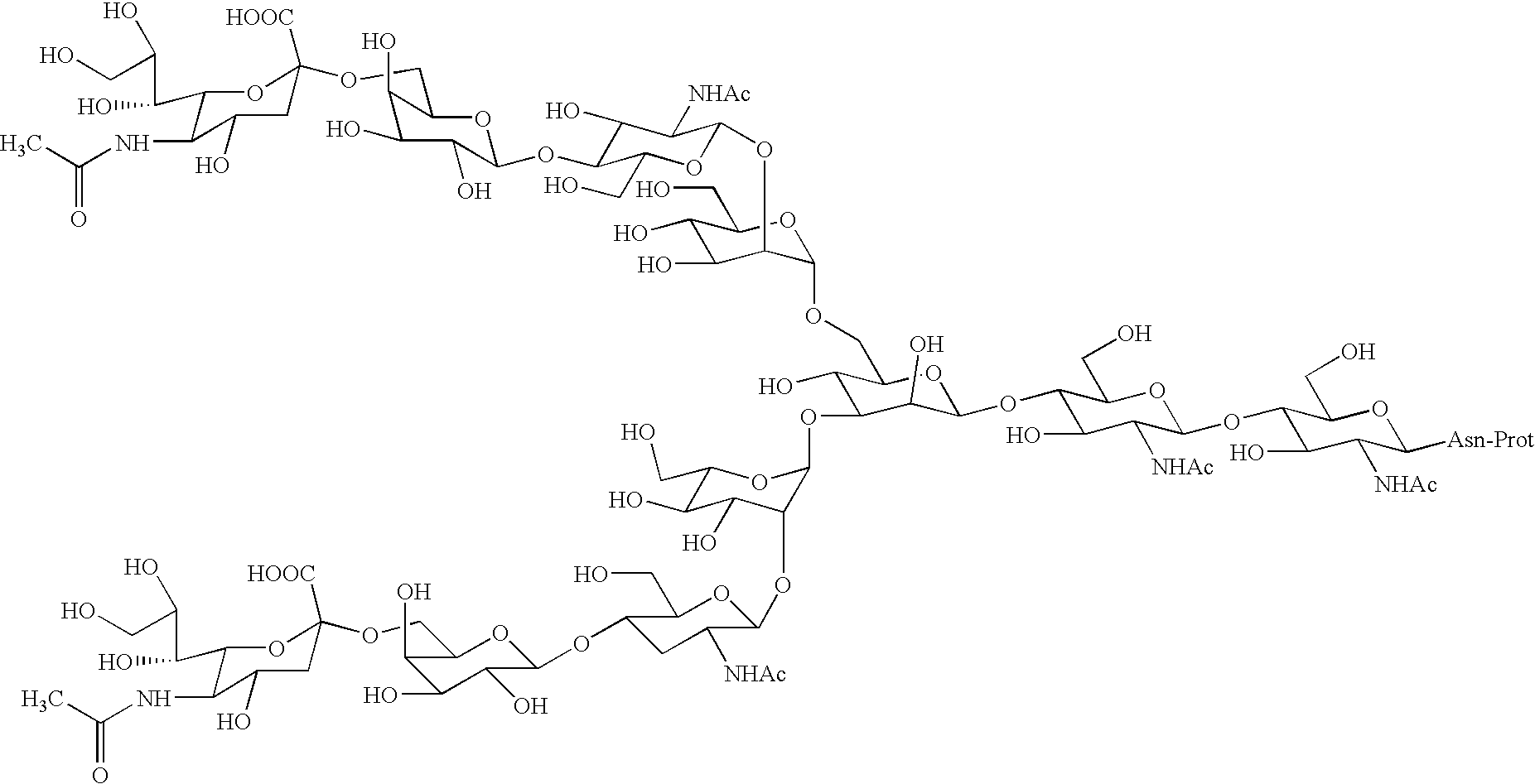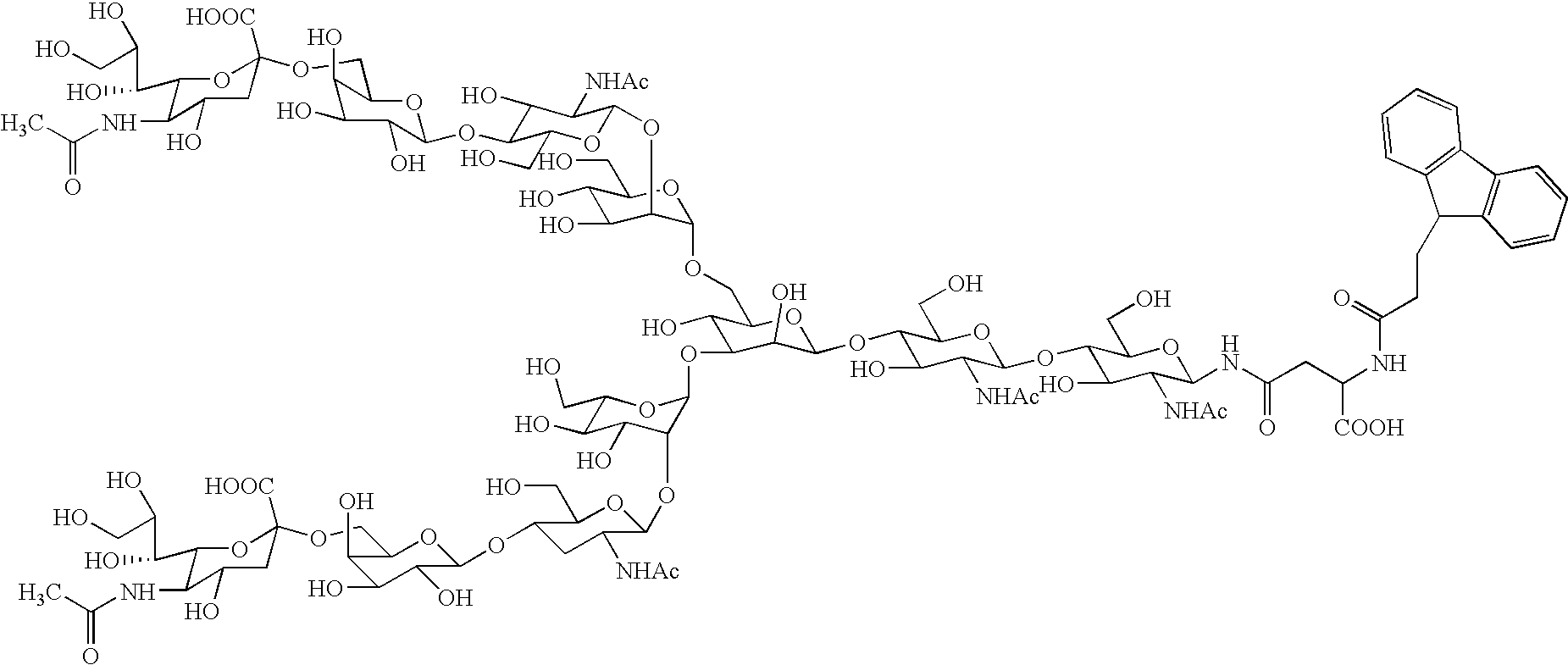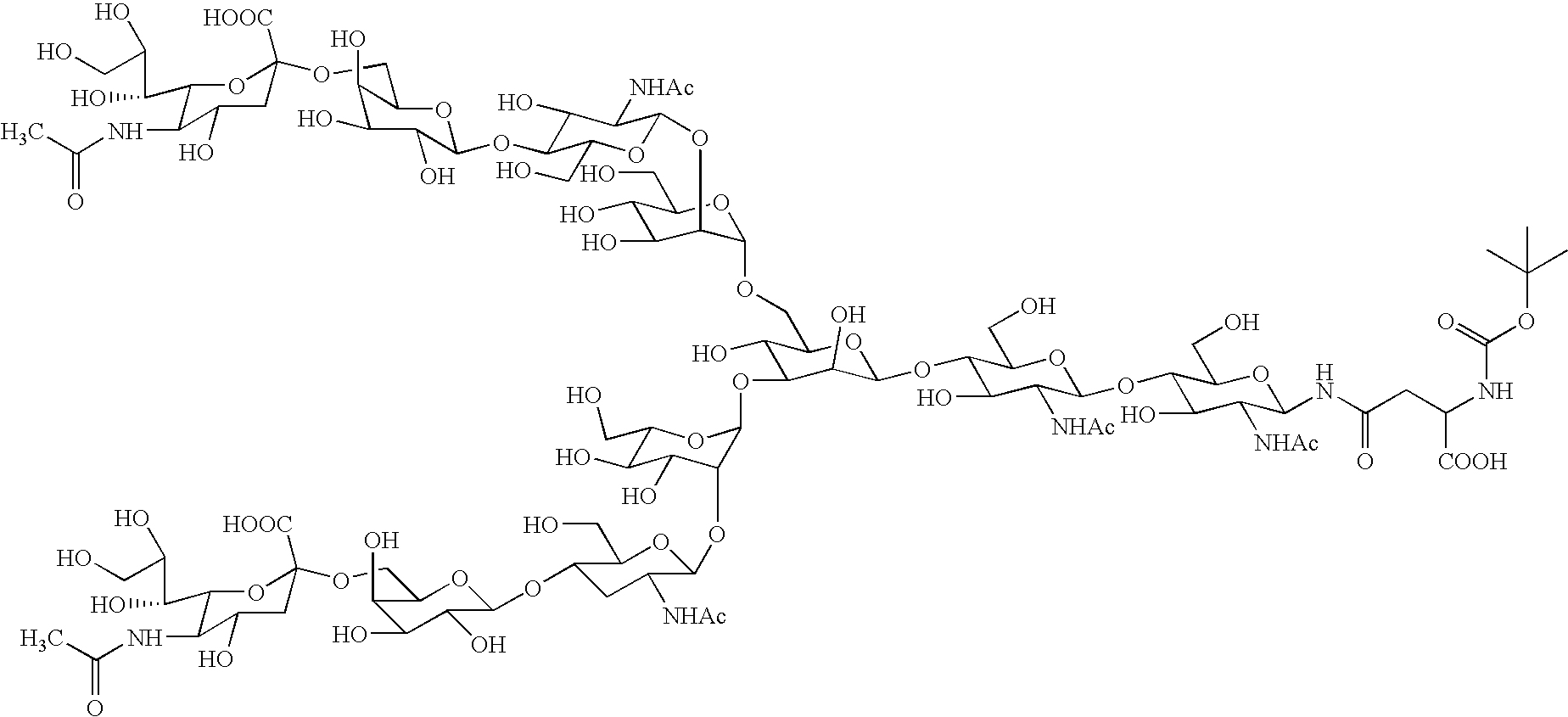Process for producing sugar chain asparagine derivative
a technology of asparagine and derivative, which is applied in the field of process for preparing asparaginelinked oligosaccharides, can solve the problems of delay in the research on oligosaccharides and failure to isolate pure asparagine-linked oligosaccharides, and achieve the effects of low cost, efficient and large amoun
- Summary
- Abstract
- Description
- Claims
- Application Information
AI Technical Summary
Benefits of technology
Problems solved by technology
Method used
Image
Examples
example 1
[0052] One egg yolk was placed as broken into 67 ml of ethanol (EtOH) being stirred. The mixture was stirred for about 5 hours and then filtered, followed by washing with 30 ml of EtOH. To the resulting crystals was added 83 ml of EtOH again, and the mixture was stirred overnight. The mixture was thereafter filtered, followed by washing with 30 ml of EtOH. The crystals obtained were dried, giving about 3 g of delipidated egg yolk.
[0053] (a) The delipidated egg yolk was dissolved in a phosphate buffer (7.0 in pH, 30 ml), and NaN3 (10 mg) was added to the solution. Orientase ONS (product of Hankyu Bioindustry Co., Ltd., 1.0 g) was further added to the solution, and the mixture was allowed to stand at 50° C. for about 24 hours. After the termination of the reaction was confirmed by TLC, the reaction mixture was filtered with Celite. The filtrate was concentrated and purified by gel filtration column chromatography (Sephadex G-25, 2.5×100 cm, H2O). The fractions containing the desired ...
example 2
Disialooligosaccharide-Boc Derivative (Undecasaccharide)
[0060] Steps (a) and (b) were performed in the same manner as in Example 1.
[0061] (c) The residue (about 120 mg) obtained was dissolved in 1 ml of 0.1 N NaOH aq. To the solution was added (Boc)2O (4 ml, product of Tokyo Kasei Co., Ltd.), and the mixture was reacted at room temperature for 2 hours. After the disappearance of the material was confirmed by TLC (isopropanol: 1M aqueous solution of ammonium acetate=3:2), 2.5 ml of dichloromethane was added to the reaction mixture for separation. The aqueous layer was further washed with 2.5 ml of dichloromethane and thereafter adjusted to a pH of 7.0 with 40 mM HCl. The aqueous layer was concentrated, and the residue was purified by an ODS column (gradient H2O 100%→H2O / AN=99 / 1→H2O / AN=95 / 5→H2O / AN=90 / 10). The fraction containing the desired disialooligosaccharide Boc derivative (confirmed by HPLC) was collected, concentrated and freeze-dried.
[0062] (d) The residue was isolated and ...
example 3
Disialooligosaccharide Ac Derivative (Undecasaccharide)
[0065] The steps (a) and (b) are performed in the same manner as in Example 1.
[0066] (c) The residue (about 120 mg) obtained was dissolved in 1 ml of purified water. To the solution were added K2CO3 (72 mg) and then acetic anhydride (99 ml), and the mixture was stirred for about 2 hours. After the mixture was reacted at room temperature for 2 hours, the disappearance of the material was confirmed by TLC (isopropanol:1M aqueous solution of ammonium acetate=3:2), and the 2.5 ml of dichloromethane was added to the reaction mixture for separation. The aqueous layer was further washed with 2.5 ml of dichloromethane and thereafter adjusted to a pH of 7.0 with sat. NaHCO3 aq. The aqueous layer was concentrated and then purified by an ODS column (gradient H2O 100%→H2O / AN=99 / 1H2O / AN=95 / 5). A fraction containing the desired disialooligosaccharide Ac derivative (confirmed by HPLC) was collected and subsequently freeze-dried.
[0067] (d) T...
PUM
| Property | Measurement | Unit |
|---|---|---|
| pH | aaaaa | aaaaa |
| wavelength | aaaaa | aaaaa |
| lipophilic | aaaaa | aaaaa |
Abstract
Description
Claims
Application Information
 Login to View More
Login to View More - R&D
- Intellectual Property
- Life Sciences
- Materials
- Tech Scout
- Unparalleled Data Quality
- Higher Quality Content
- 60% Fewer Hallucinations
Browse by: Latest US Patents, China's latest patents, Technical Efficacy Thesaurus, Application Domain, Technology Topic, Popular Technical Reports.
© 2025 PatSnap. All rights reserved.Legal|Privacy policy|Modern Slavery Act Transparency Statement|Sitemap|About US| Contact US: help@patsnap.com



